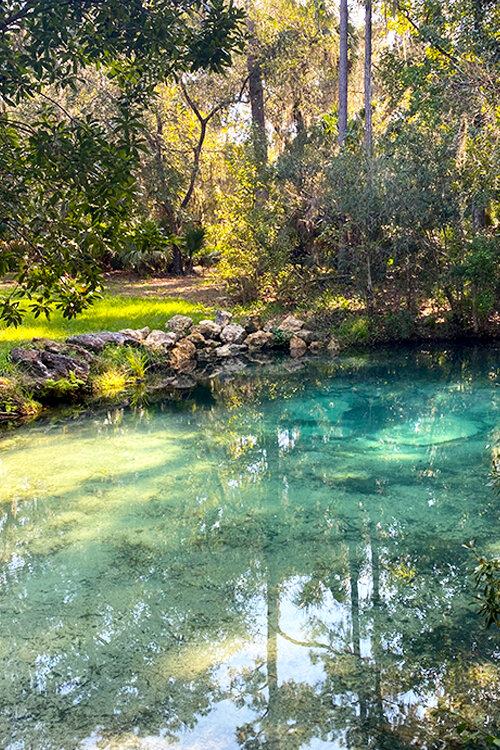Hiking to Mud Spring in Welaka State Forest
PARK OVERVIEW
The Welaka State Forest is located in Northeast Florida about 17 miles south of Palatka, bordering 2.5 miles of the St. Johns River. Comprised of 2,287 acres of pinewoods, cypress, sandhills, and swamp, this waterfront jungle was once home to the Timucua people. All that remains are oyster shell discards (“middens”) and Mount Royal – the site of a Timucua burial mound.
The Seminole Indians used the word “Welaka” to describe the river in Northeast Florida. “Welaka” means "tide" or "intermittent springs." There are two springs located in the Welaka State Forest – Mud Spring and Sulphur Spring (accessible via hiking trails).
The forest’s multi-use trail system is divided along the east and west sides of State Road 309 and is part of the Bartram Trail. There are over 20 miles of trails and forest roads for driving, hiking, and equestrian use.
State Road 309
Our Adventure
At the first trailhead of the Welaka State Forest (west of 309), we travel a winding footpath through sprawling live oak, cypress trees, and flat pinewoods. The hustle and bustle of everyday life fades away, and all that remains is the real Florida.
Our boots rustle on thick beds of pine needles. Fresh green grass blankets the earth, keeping it warm to its deep core. Moss hangs in thick clusters for miles, and beyond it, thick and endless woods.
Moss Draped Oak Trees
Mud Spring Trail
Blazing the lime green marked trail, we come to a fork in the road and decide to keep straight on the Mud Spring Trail. We traverse hardwood hammocks and jagged saw palmetto with elongating limbs. After about a mile, we cross over a short wooden bridge to the anticipated pool of life.
Mud Spring Trail
Mud Spring
The sound of loud, rushing water takes over. Mud Spring is a 4th magnitude spring, which means it has a flow of nearly 14,000 gallons of water per hour. The spring is about 85 feet long by 65 feet wide.
Every shade of blue and green glimmers all at once – turquoise, aqua, cerulean, emerald, sapphire, creating a crystal clear, tranquil refuge.
A force of bubbles at the bottom amongst the white sand reveals the spring water propulsion from underground tunnels. Groundwater from deep layers of the aquifer is the source of our drinking water. The spring forms the head of Mud Creek with discharge flowing down a 0.5-mile run to the St. Johns River.
Mud Spring
We circle around all edges of the spring to get a closer look. The sun touches the water at every angle to reflect the surrounding forestry. There is no barrier around the edges of the glassy oval basin; only an open invitation to submerge oneself in Florida’s fresh springs.
Welaka Forest Trails
Mud Spring Trail – 1.75-mile loop
John’s Landing Trail – 3-mile or 4.5-mile hiking trails
Forest Educational Trail - 0.5-mile loop (shared trailhead with John’s Landing)
Sandhill Equestrian Trail - 6 miles (features horse stable & visitor center)
William Bartram St. Johns River Loop - 5-mile hiking trail
Indian Pond Road - scenic driving trail
More Things to Do
Kayak / Canoe Launch – Put in at Mud Spring where you may spot bald eagles on the east bank of Little Lake George.
10 primitive camping sites at Orange Point and John’s Landing (permit required)
Biking, Fishing, limited Hunting
Amenities - picnic pavilions, restrooms, visitor center near Sandhill trailhead
Explore More:
Learn how you can help protect Florida’s Springs:




